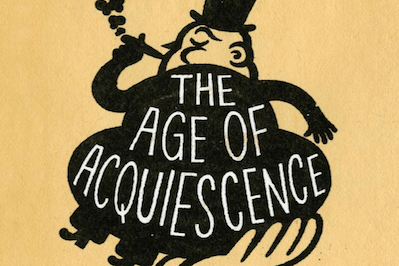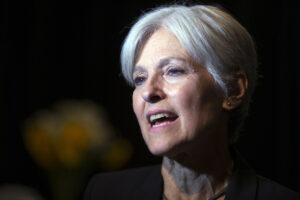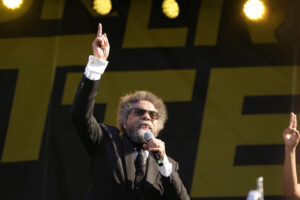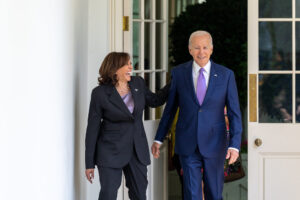Looking Backward to the Future
The strangling of our political potential by a claustrophobic sense of the possible did not always typify American public life. My book is about that change in the temper of the times, and is in part motivated by my own experience. Little, Brown and Co.
Little, Brown and Co.
Little, Brown and Co.
This essay is by the author of “The Age of Acquiescence: The Life and Death of American Resistance to Organized Wealth and Power,” which was published this week by Little, Brown & Co.
Lamentations about the sorry results of the midterm elections have preoccupied the progressive community. Blame has been liberally distributed: Obama’s ineptitude, the Democratic Party’s incoherent messaging, the Koch brothers, low turnout among the demographics that turned the tide in 2012, state laws restricting suffrage, candidates with gelatinous backbones, and relentless Republican demonizing of the president. All these and more have been credited with the humiliating reduction of the Democrats to an ineffectual congressional minority.
However, standing back from the fray, it is worth noting that before the Democratic Party became an anemic minority, it had spent the previous six years as a rudderless majority. It forfeited the chance during that period — especially in the first two years of the Obama era, when it controlled both Congress and the presidency — to use the financial collapse and disgust with the Iraq fiasco to decisively move the country to the left. November’s election debacle might be viewed as the longer-term outcome of that equivocation. We live frozen in time, oscillating between extreme political prognostications that come and go and come again, fantasies with little purchase on reality. In 2012, the Republican Party was pronounced all but extinct, done in by demagogues and demographics. Now, it rules. The tea party was alleged to be a wholly owned subsidiary of corporate America until much of corporate America decided to wage war on the tea party. The Democratic Party seemed to open its arms to the “New Populism” (especially after Occupy Wall Street rattled the cage), but now seems resigned to embracing the queen of neoliberalism, Hillary Clinton.
Political paralysis has disabled the country for a long generation. Over the last half-century, political life has polarized between efforts to defend and restore the New Deal order of things and relentless attempts to repeal it and replace it with something even older. This running in place is symptomatic of a profound lack of public imagination and what has become a habitual acquiescence to the powers that be. It is a toxic and a contagious brew engendering fear and delusion. But this claustrophobic sense of the possible did not always typify our public life. My book is about that change in the temper of the times, and is in part motivated by my own experience.
If Not Now, When?
Fifty-one years ago, I found myself in Starkville, Miss. It was the summer of 1964. I had come there from a Northern middle-class suburb to fight against American apartheid in its heart of darkness. I was 18. There I met a black man just about my age who had spent his whole young life in and around this small town. His name was Mohawk; or at least that was the only name I knew him by at the time. (Just recently, I learned his actual name was John Banks.) Mohawk and I went through a lot together during that Freedom Summer. The basic story is too well-known to recount the details here. But I do want to note that “The Age of Acquiescence,” my book that will be published [in February], is dedicated to the memory of Mohawk, who died some years ago. And I mention it because that experience has never left me, and it prompted the question that animates this book of mine.
Really, it is a double-pronged historical mystery: Why, on the one hand, do people submit for so long to various forms of exploitation, oppression and domination? Equally baffling, why do they ever stop giving in? Why acquiesce? Why resist? Looking backward, the indignities and injustices, the hypocrisies and the lies, the corruption and the cruelty may seem insupportable. Yet they were tolerated. Looking backward, the dangers to life, limb and livelihood entailed in rebelling may seem too dire to contemplate. Yet, in the teeth of all that, rebellion happened. Starkville and the Mohawks of Mississippi happened. There and at other times and places in our country’s history, one can watch in astonishment the extraordinary capacity of people, at certain times and under certain circumstances, to collectively stand up against the most intimidating forms of power and prejudice and to overcome internalized forms of social deprecation that can be so disabling.
More commonly that is not the case. That would seem to have been largely true — although not entirely so — here in the United States over roughly the last half-century. And this I think applies not only with regard to our state of permanent war that began with 9/11. I think it characterizes more widely our submission — for some willingly, for others not so much — to the domination of our public life by a plutocratic elite (christened by Occupy Wall Street as “the 1 percent”) and a mandarinate of managers commanding the nation’s global surveillance state. And I speculate that these two variants of acquiescence — to endless war and to the dominion of Wall Street — may be related. To borrow the rubric of an antiwar website, it’s a matter of “war in context.”
With that in mind, please indulge one more piece of autobiography. Some years after I’d left Mississippi, as the tumultuous decade of the ’60s was drawing to a close, I found myself in a jail cell in Philadelphia. I was charged with plotting to blow up the Liberty Bell. The FBI, the local police under the command of its chief, Frank Rizzo, and in particular the department’s civil disobedience squad had raided my apartment and discovered there what they had earlier planted (to the delight of the TV cameras that followed the police raiders into the apartment): namely, a sour-ball candy can full of gunpowder, pipes, wires and the very powerful military explosive plastique known as C-4.
Not long before this, Students for a Democratic Society (SDS), in which I was active, had led a student strike that was centered at the University of Pennsylvania but that also embraced “occupiers” from many of the area’s campuses (Bryn Mawr, Swarthmore, Villanova, Temple, Haverford and so on). The strike, in which I had played a prominent role, targeted two matters: the construction by a consortium of area colleges of a science center that would conduct, we had good reason to believe, war-related research; and the real estate speculations carried out by the city’s leading real estate and financial institutions tied to the land to be developed. These dealings also entailed the wholesale eviction of poor, largely African-American residents in the neighborhood adjacent to the Penn campus.
For the students and faculty and community members involved in the sit-in, this was indeed a case of the Vietnam War in context. It linked the doings of powerful elites at home and abroad. And the FBI’s intervention in my case showed the hand of the national security state in trying to suppress domestic dissent. Indeed, the bureau’s Cointelpro operation had cooked up a broader fantasy scenario of antiwar groups plotting to blow up national monuments all across the country.
I am by no means a zealous defender of all that transpired during the rebellions of the 1960s. My point in bringing this up is only to note that opposition to the Vietnam War — along with the civil rights and feminist movements, the last great resistance movement of our era — often, although not always, indicted not only the war but a whole way of life. One might call it the liberal Cold War political order, both as a set of foreign, imperial-minded interventions abroad and an inequitable domestic social order.
That “homeland” had tolerated racial subordination, widespread poverty, urban squalor and police violence. It rested on sexual repression and patriarchal domination. It nourished competitive and anomic social relations, and the self-absorbed preoccupations of consumer culture. It had allowed the capturing of our leading democratic political and even cultural institutions by the captains of corporate America and the chieftains of the national security state. State, along with racial and economic, hierarchies were placed under indictment.Embedded in the depths of sentiment that animated the resistance movements of that era was a realization that something was rotten at the core of the postwar liberal dispensation that had once seemed so promising. Here the incendiary word is “liberal.” It is easy enough to forget in this contemporary moment, when liberalism of a sort seems to be chronically under siege from the populist right, that the permanent warfare state was a liberal creation. The New Deal order and the postwar American imperium grew up together. They intermingled in the late 1940s and 1950s when the Red Scare was inaugurated at the highest levels of a liberal-led Truman administration (that is, not by Joseph McCarthy). It purged the political culture of the last vestiges of anti-capitalism and shackled even more circumscribed reform instincts like the desire for racial equality or universal health care that had helped inspire the upheavals of the 1930s.
These earlier insurgent emotions and social connections were reborn and ran like electric currents through the converging upheavals of the ’60s. One might short-hand that by alluding to Martin Luther King’s conjoining of the civil rights, anti-poverty and anti-war movements in his final years. And King’s audacity itself echoed the antiwar perspective going all the way back to the World War I era. Then war-making was perceived by millions as an outcome of imperial rivalries and sometimes entailed a rejection not only of imperialism but of capitalism, tout court.
In our own time, those connections have withered or have been largely severed. There are many ways one might view that development. But there is one that most directly brings me back to the argument of my book.
Fear Itself
Today, the national security state and what might be called the politics of fear has metastasized well beyond what might have been imagined or at least thought technologically feasible by its Cold War architects. If Franklin D. Roosevelt famously cautioned the nation that the only thing we had to fear was “fear itself,” today we are warned that the only thing we have to fear is not being fearful enough. This can be incapacitating when it comes to mounting resistance.
But something more, something that reaches deeper into the sources of consent has also occurred. At the dawn of the Cold War, we were purportedly defending freedom and democracy, the free world versus a modern version of slavery and tyranny. It is noteworthy, however, that little of the hypertrophic (and hypocritical) rhetoric of those formative years mentioned the defense of capitalism. The worldwide breakdown of that system in the Great Depression, the mass misery it had caused, was too fresh in collective memory for power elites to want to open up wounds that hadn’t had a chance to heal yet.
How far we have come since then! Now the conflation of freedom and democracy with the free market and capitalism is an axiomatic part of the official rationale for our foreign adventures, for invading this country and bombing that one, for our covert operations abroad and our pervasive surveillances at home. If we flatten a country in the process of getting rid of its warlords, theocrats or truculent nationalists, we promise to replace it with a modern agora and voting booths as if they went together like love and marriage. When invasion is not really feasible, we engage in skullduggery to undermine governments not solicitous enough when it comes to catering to American corporate interests. If we tutor friendlier developing nations about how to order their affairs, we insist they imbibe heavy doses of our free market Kool-Aid, shedding whatever obstacles their indigenous political institutions might have erected in the past. We accuse our putative enemies of hating our way of life. And there is no question that it is a way of life we are upholding, which George W. Bush memorably invoked in urging us to go shopping after the twin towers fell.
Shopping for what ails you is by no means brand new. Richard Nixon’s famous “kitchen debate” with Nikita Khrushchev in 1959 (when the American vice president faced off against the Soviet premier in Moscow at the U.S. pavilion of an international exposition) was all about how the United States would bury communism under an avalanche of consumer delectables. Nonetheless, I would argue that there is a new kind of triumphalism on behalf of the private enterprise system that helps mobilize mass sentiment today on behalf of the American Empire. This has come to us with the advent of neoliberalism here at home and the fall of the Soviet Union abroad. It is as well part of a pervasive cultural atmosphere of ideological and technological determinism that persuades that there is no alternative.
The Age of Resistance
Once upon a time there were alternatives. During what in my book I call the “long 19th century” — a period lasting through the New Deal, its echoes still audible during the ’60s — a culture of anti-capitalism competed with the triumphalist ideology of progress and Social Darwinism that defined the cultural mainstream during the industrial revolution. This oppositional persuasion took many forms. It ignited not only our economic and political confrontations, but surfaced more pervasively in the country’s religious life, its literary imagination, in the halls of academic high culture and in the penny press and urban melodramas of popular culture. It captured the attention of poets and priests, novelists and senators, journalists and utopian dreamers, handicraftsmen and scholars, farmers and immigrant proletarians. It inspired a host of resistance movements, including anti-war ones. Many of these failed. Some succeeded in changing the physiognomy of dog-eat-dog capitalist civilization that partisans of this world in rebellion considered an anti-civilization.
Each of these resistances had its own idea of what would replace the world as they knew it. Sometimes their visions overlapped. Sometimes, as, for example, in the case of the Knights of Labor, Populist, anti-trust, social welfare and even elements of the socialist and syndicalist movements, they collaborated. Some were more and some less uncompromising about performing a root and branch amputation of capitalism. What lent this long century its frisson, what made it distinctive, when compared with our own era, in its capacity for sustained resistance to the powers that be, was this underlying sense of alternative. A conviction gripped multitudes that the last word had not been spoken. Capitalism — at least as it presented itself then — had only recently and rather violently come into existence. So it might go out of existence, or at least be transformed beyond recognition. And indeed barbaric capitalism was eradicated, supplanted by a civilized one under the auspices of the New Deal.
The Age of Acquiescence
Why so much of that died away is perplexing. But one might say that for some time now we have been heading back to the future. Neoliberalism, here and abroad, strips away or attempts to strip away the armature of that civilized capitalism. That has not, however, invited concerted, organized, sustained mass resistance during our second Gilded Age of the sort so characteristic of the first one. And that includes opposition to the wars of the neoliberal state.I exaggerate, of course. Movements do exist today to confront the inequities and iniquities of our times. Wall Street bandits are, once in a while, arrested by a sheriff. Some ministers, even born-again ones, do still preach the social gospel. Uprisings of the working poor at fast-food chains, at car washes, inside Fortress Walmart and at dozens of other sites may yet break through the ossified remains of the old trade-union apparatus. As Mother Earth grows sickly and dangerous, the environmental movement has for decades persisted and gathered steam. Occupy Wall Street loudly interrupted the silence of the second Gilded Age. Yet its very evanescence makes it the exception that proves the rule.
For all of this seems a pale shadow of what once was. Something fundamental about the metabolism of capitalism as a social and cultural order (not only as a system of production and distribution) has changed.
Reasons for this more general acquiescence are what the second half of my book wrestles with. Deindustrialization ravaged the heartland and not only brought down smokestacks, but along with them the organizational muscle, cultural self-confidence and political weight of the labor movement and its many allies. And this is not to mention how it whittled away at the self-respect of working people generally.
Gordon Gekko made his distinctive contribution as well to the cultural infatuation with the machismo of the free market. That is to say, a new breed of financial privateers, rising to the surface of public life in the 1980s, waged war on capitalism on behalf of capitalism. This was a legendary war of upstart wannabes against what they depicted as a white shoe, senescent and sclerotic industrial and financial hierarchy. Thus was born a strange new species of populists in pinstripes adulated by all the channels of the mainstream media: Wall Street R Us.
Why complain when a people’s capitalism promised to rescue that indigenous American genius for self-reliance from the clutches of the regulatory and nanny state? Neoliberalism presented itself as a freedom movement. Its freedoms could be found in the exquisite menu of desires available through all the proliferating new highways and byways of consumer culture, a privatized self-emancipation. Or neoliberal freedom could be rediscovered at work. Precarious employment, a hallmark of our system of “flexible capitalism” — temporary, part-time, inherently insecure, lacking in all the amenities, like pensions and health care, of civilized capitalism, not to mention its shedding of what legal protections remained — was reimagined as the labor of “free agents.” How exhilarating for people to be out there on the new frontier of the information superhighway reinventing themselves!
Fear, too, has played its part, especially among the millions of immigrants and the working poor more generally, who have to think long and hard before daring to defy a sweatshop economy, once a free market aberration, now more and more the norm. Rights once considered virtually constitutional, like the right to organize, are no longer worth the legislative paper they were printed on.
The politics of fear travels up the social hierarchy thanks to a state-sponsored paranoia. On the one hand, it exacerbates an already pronounced penchant to be macho in the face of fear, to flex muscles not only at aliens overseas but at domestic strangers in our midst. On the other hand, the dark matter of a parastate has grown up around us. It operates outside the law, or ad libs or reinvents the law, arrogating to itself powers undreamed by the founders of democracy, but always on behalf of democracy. Still, there are, by and large, no tanks in the streets. Rather persuasion, not force, does much of the heavy lifting.
Many blame the media, which are intertwined with the power blocs of politics and business (an increasingly concentrated planetary business) and which do now and then function as propaganda machine and censor. But most of the time the media operate more insidiously than that, narrowly circumscribing what is allowable and thereby what is verboten in public debate, what is legitimate and what is outré, what is to be taken seriously and what is to be coolly dismissed. They invoke the sounds of silence without gagging anyone.
Political options closed down thanks to the genetic change in the Democratic Party as well. It ended up confining to the attic what remained of its populist sentiments, seeking to woo instead new, middle-class constituencies that felt more comfortable with the free market and the social liberalism radiating out of the ’60s. Roosevelt’s New Deal always steered away from anti-capitalism, and the president went to great pains to explain that to a business community that was initially often hostile to what he was doing. But the mass social energies that buoyed his administration were alive with such anti- and noncapitalist ideas and emotions. Today’s neoliberal Democratic Party has largely killed them off.
And, of course, there’s more to be said than this overview can suggest. But in the end, the horizon of the possible, which once during the long 19th century seemed so capacious and inspirational, has narrowed and closed in on us.
Money talks. That is an axiom on which we can all agree. But all the great social upheavals of the long 19th century, including the passionate moral outburst of the civil rights movement, always originated in a realm before money and looked for gratification in a realm beyond money. To be sure, they were rooted in material need and not shy about what they needed to live in a civilized way. However, intermingled with those material wants and desires, affixed to them like emblems of the spirit, were ineffable yearnings to redefine what it meant to be human together. Perhaps that is the enduring legacy the long 19th century bequeaths to our own.
Your support matters…Independent journalism is under threat and overshadowed by heavily funded mainstream media.
You can help level the playing field. Become a member.
Your tax-deductible contribution keeps us digging beneath the headlines to give you thought-provoking, investigative reporting and analysis that unearths what's really happening- without compromise.
Give today to support our courageous, independent journalists.






You need to be a supporter to comment.
There are currently no responses to this article.
Be the first to respond.